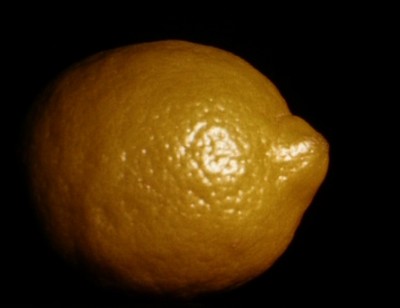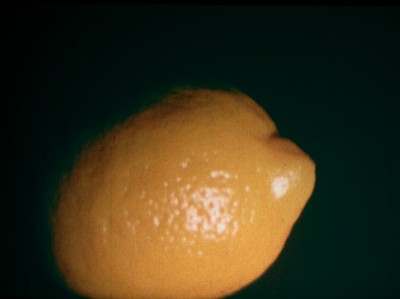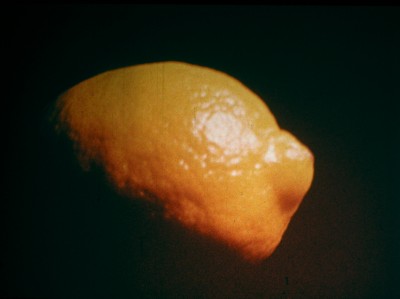THE
25 February 2011
John Latham's kinetic roller painting THE (1976) and films and video around the house by Ian Bourn and John Smith, Charles & Ray Eames, Hollis Frampton, John Latham.

THE is a score, which is played out like notes from a tin music box as its pins - letters in this case - roll over the cylinder to which it is attached. The score exists, in its entirety, all the time, but we perceive it only as the painting is activated by time; the time it takes for the canvas to pass over the rolling cylinder.
THE was made for an exhibition at The Gallery on Bell Street in 1976. It is a large canvas with stenciled letters set out in a grid, attached along its upper edge to a cylinder which is also covered in canvas. At The Gallery, THE was could be viewed from front and back. If you saw it from the back, you would see a grid of upside down letters, hard to form into words. If you saw the hanging canvas from the front, you would see an impression of the same, but only where the ink was thick enough to seep through the canvas. However, if you saw the canvas in motion, as the artist intended, you would see bands of letters rolling over the front of the mechanised cylinder and you would be able to read them, not horizontally - the roller would be turning to fast to read across the lines - but vertically.
Each line begins with the letter 'H'; each statement stems from the same root before branching off in contradictory directions. John A. Walker, in his monograph on Latham, suggests that the artist is using these bands of text to describe multiple fields of knowledge which possess a common core, but divergent histories thereafter. In order to read one line of text, the viewer must 'specialise', adopting a tunnel vision in order to follow a narrow line of enquiry, at the expense of understanding the whole event.
Each line of text is an attempt to articulate the universal question 'What can we say to be going on?' through crude and comic sound-alike variations of the phrase. The title THE "was derived from...the last word in James Joyce's novel Finnegans Wake; a word pregnant with infinite possibilities." (John A. Walker in 'John Latham - The Incidental Person', 1994).
This is the first time that THE has been fully operational in many years, possibly since that show at The Gallery.
The works in the screening programme have a similar internal logic; all elements of the story, event or action are in frame from the very beginning, uncomprehended. It is time which unfolds and reveals them.


Stills from Hollis Frampton Lemon (For Robert Huot) (1969) 16mm, 7', 16fps, colour, silent. Courtesy LUX, London.
What can we say to be going on?
From 6.30 - 8.30pm Flat Time House will play host to the following works:
The Kiss, 1999
Ian Bourn, John Smith
Video
5 mins, colour, sound
Courtesy LUX, London
Powers of Ten, 1968 (rereleased 1977)
Charles & Ray Eames
16mm
8 mins, colour, sound
Courtesy BFI
Lemon (For Robert Huot),1969
Hollis Frampton
16mm
7 mins, 16fps, colour, silent
Courtesy LUX, London
Erth, 1971
John Latham
16mm
25 mins, colour, sound (optical)
Courtesy LUX, London
John Latham's renovated, newly operational, mechanised roller painting THE (1976) will also be installed.